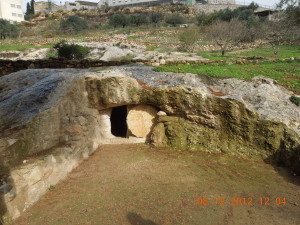For people in ancient times no less than for moderns, to believe and stake your life on a Lord who comes back from the dead does not come easily or automatically. Yet, our faith-forebears did believe and lived with such power that our world today has been decisively shaped as a result. 
Here is one of the most important questions to ask in the weeks after Easter: on the strength of resurrection power, can we believe that all the good God has done since the first Easter will actually be dwarfed by what God will yet do?
At this point, I suspect that we are often like the man who confessed to Jesus: “I do believe, but help me overcome my unbelief!” (see Mark 9:14-24). Here are some ongoing Easter realities that we do believe but still: “Lord, help our Easter unbelief.”
- That Jesus is alive, present, and active in our world today, as much as ever, if not more. He did not live, die and rise simply to vacate the planet he wants to love to LIFE. Resurrection came both as an end and a beginning—an end to the pretentions of the great enemies of God’s creation and re-creation plans; an end to the necessary consequences of going our own way in the offer of a better way, the way of Jesus. But Jesus’ rising also signals a new beginning of the making new of all things, of the living in the nitty-gritty of a beloved humanity, of dying with them in order to rise with them to be what they were always meant to be. All such endings and beginnings embodied in the raised Jesus—now alive, present and at work in the 21st century world no less than the 1st century world.
- That this Jesus calls us to follow no less truly and actually as he ever called anyone in his earthly-bodily life. That our “yes” to follow means basically what the “yes” of Peter, James and John meant. That in some sense we are truly following the living Lord Jesus, alive, present and at work in our world. That in what we do and don’t do we somehow are, or may be, entering into what Jesus does and does not do. That it’s not us but him, not our ministry but his, not our church, but his, not our work but his.
- That we (pl.) are the very Body of the Jesus Christ who is alive, present and active with whom we walk in life and ministry today. That locally our churches are, or can be, a coordinated embodied presence in their communities and world that reflects the real presence of Jesus and does together Jesus’ work. And, even more,
- That somehow we are, or can be, connected, coordinated with other groups of Jesus-followers to form larger, more beautiful and powerful expressions of Jesus’ presence and power in our region and world.
- That we are contributing to Jesus’ work to redeem the world, to change it, to move the world toward the actual Kingdom of God, not making it happen, but contributing to what Jesus is doing to make it happen, such that the world becomes new and eventually is re-created.
Look at the first century world where the Jesus movement began. A baby of questionable origins is born in a no-name place, then grows and engages in a surprising ministry that generates great excitement and promise. His ministry fuels the hopes of his people, hopes that had grown dim or dormant, hopes fueled only in the end to be hanged on a Roman cross as he dies. End of story, so everyone thought.
Until the third day when something happens, and stories spread that the One dead has come alive again, but alive in a way different than before, now with a power to shape all succeeding human life and history. Finally, by and by, as a matter of undeniable historical fact, the movement generated by this One-back-from-the-dead and his followers shapes the rest of the human story up to now in such a way that it is not even possible to conceive of the way things are without reference to this One-back-from-the-dead and his followers.
Think of the enormous consequences of this little, “insignificant” beginning, consider its transforming power reaching out of a two millennia-deep past extending trajectories of hope into the far reaches of our future. Reflect on the spread of this movement from a stable to virtually every corner of our present global world. Now, can you imagine a comparable ongoing deepening and forward spread of that same movement in coming generations, such that the difference between the current state of the world now and its state then will be like the difference between what is now and the world of first century Bethlehem?
I think this is precisely what Paul the Apostle was getting at when he concludes his sweeping treatment of the “Resurrection of the Body”—first Christ’s and then ours, which he describes as a sign of the eventual undoing of all that is corruptible, mortal, and deadly throughout the whole of creation, indeed, a sign of the re-creation of all that is! The Apostle then concludes by saying, “So my dear brothers and sisters, remain steadfast, unwavering, always abounding in the work the Lord (none other than this One-back-from-the-dead forever!) because you know that your labor in this Lord is not in vain!” (see 1 Cor. 15:58)
Given what we know has happened, can we believe that what is now will actually be dwarfed by what God will yet do? That, indeed, as we follow Jesus—that One-back-from-the-dead-forevermore—we do participate in his world-changing, kingdom-bringing work?
Lord, we do believe, but help our Easter unbelief!